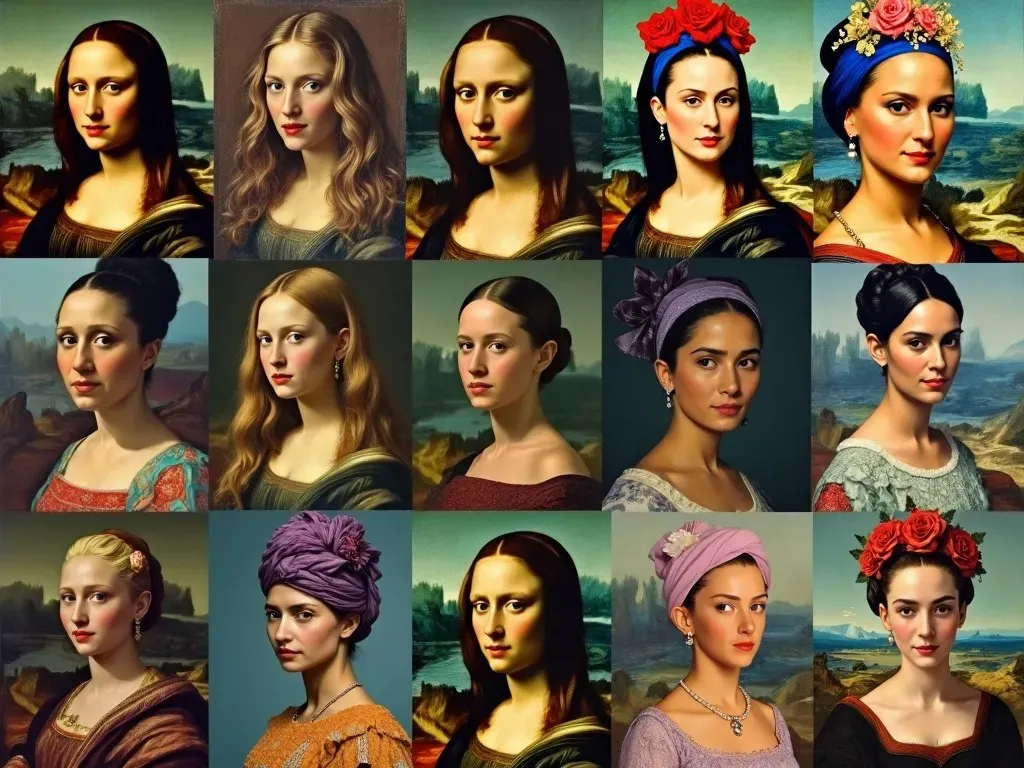Portrait paintings are a captivating genre of art, focusing on the representation of specific human subjects. Artists create these artworks to convey their subjects’ likeness, personality, and essence, often capturing the nuances of their expressions and emotions.
The Evolution of Portrait Paintings
Portrait painting has a rich history, evolving from ancient depictions to modern interpretations. This art form allows for a deep exploration of character, social status, and even personal narratives.
| Era | Characteristics | Notable Artists |
|---|---|---|
| Ancient | Idealized forms, often connected to religion | Unknown Egyptian Artists |
| Middle Ages | Religious figures, flat representations | Giotto, Cimabue |
| Renaissance | Realism, use of perspective and anatomy | Leonardo da Vinci, Raphael |
| Baroque | Dramatic lighting, emotional depth | Rembrandt, Caravaggio |
| Modern | Abstract interpretations, conceptual approaches | Pablo Picasso, Frida Kahlo |
Noteworthy Styles in Portrait Painting
Throughout history, portrait painting has developed various styles, each reflecting the cultural and artistic movement of its time. Here are some prominent styles:
-
Classic Portrait Painting: Characterized by realism, attention to anatomical details, and the use of oil paints. Leonardo da Vinci’s Mona Lisa epitomizes this period.
-
Impressionism: Artists like claude monet and Pierre-Auguste Renoir explored light and color, focusing on the subject’s mood rather than meticulous details.
-
Expressionism: Moving away from realism, expressionists depicted emotional experiences. Artists such as Edvard Munch illustrated inner feelings through distorted forms and vibrant colors.
-
Cubism: Pioneered by Picasso, this style deconstructed figures into geometric shapes, offering multiple perspectives within a single frame.
-
Contemporary Portraits: This modern genre can include anything from photography to digital art, focusing on identity, social issues, and self-representation.
Famous Portrait Paintings and Their Historical Significance
The impact of portrait paintings can be seen in some of history’s most revered artworks. Below are a few famous portraits and the stories behind them:
| Portrait | Artist | Year | Significance |
|---|---|---|---|
| Mona Lisa | Leonardo da Vinci | 1503-1506 | Renowned for its enigmatic expression and detailed realism. |
| Girl with a Pearl Earring | Johannes Vermeer | 1665 | Celebrated for its light and shadow play, often referred to as the ‘Mona Lisa of the North.’ |
| The Night Watch | Rembrandt | 1642 | Known for its innovative use of light and movement in portraying a group. |
| Self-Portrait with Bandaged Ear | Vincent van Gogh | 1889 | A poignant expression of the artist’s emotional struggles and mental state. |
| American Gothic | Grant Wood | 1930 | Emblematic of rural American identity during the Great Depression. |
Techniques in Portrait Painting
Portrait artists employ various Techniques to capture the essence of their subjects. Here are some of the key techniques:
-
Chiaroscuro: This technique involves the use of strong contrasts between light and dark to give the illusion of volume in modeling three-dimensional objects and figures.
-
Sfumato: Used by artists like Leonardo da Vinci, this technique creates a soft transition between colors and tones, giving a smoky effect that enhances realism.
-
Impasto: A method where paint is laid on the canvas in thick layers, adding texture and depth to the portrait.
Impact of Famous Portrait Paintings
Famous portrait paintings inspire not just artists but also historians, cultural commentators, and the general public. They reflect societal values, collect fragments of history, and provoke discussions about identity and representation.
Famous Art Portraits in Pop Culture
In the modern era, famous portraits have transcended art galleries, infiltrating pop culture, fashion, and advertising. Iconic images like The Girl with a Pearl Earring inspire contemporary fashion collections, while Mona Lisa saturates merchandise from coffee mugs to smartphone cases.
Frequently Asked Questions
Q: What defines a portrait painting?
A: A portrait painting is a depiction of a specific individual or group, emphasizing likeness, personality, and mood. It is often created with the intention to convey the subject’s essence.
Q: Who are some of the most famous portrait painters?
A: Notable portrait painters include Leonardo da Vinci, Rembrandt, and Frida Kahlo, each known for their unique approaches and contributions to the genre.
Q: How do modern portraits differ from traditional ones?
A: Modern portraits may explore abstract forms, mixed media, and conceptual themes, often challenging traditional representations and focusing on identity, society, and self-representation.
Q: Are famous portrait paintings considered historical artifacts?
A: Yes, many famous portrait paintings are regarded as historical artifacts, encapsulating the social, political, and cultural contexts of their time.
Q: Can portrait painting be a form of political commentary?
A: Absolutely. Many portrait artists use their work to comment on political and social issues, capturing the zeitgeist of their era.
Conclusion
Portrait paintings serve as windows into the past, allowing us to appreciate the craftsmanship of artists and the personalities of their subjects. As art continues to evolve, the tradition of portraiture endures, offering new narratives and perspectives while maintaining its historical significance.
For those interested in further exploring famous portrait paintings and their impact on art history, you can visit Wikipedia for more comprehensive information.
